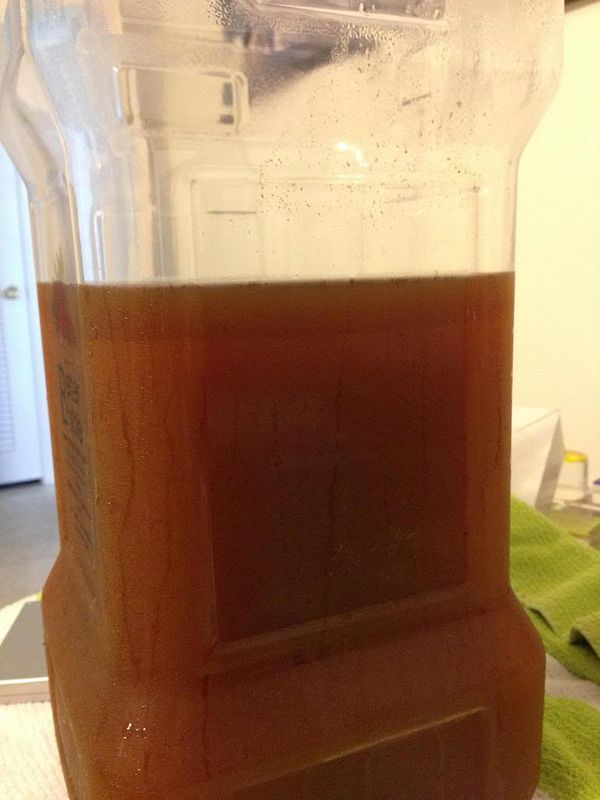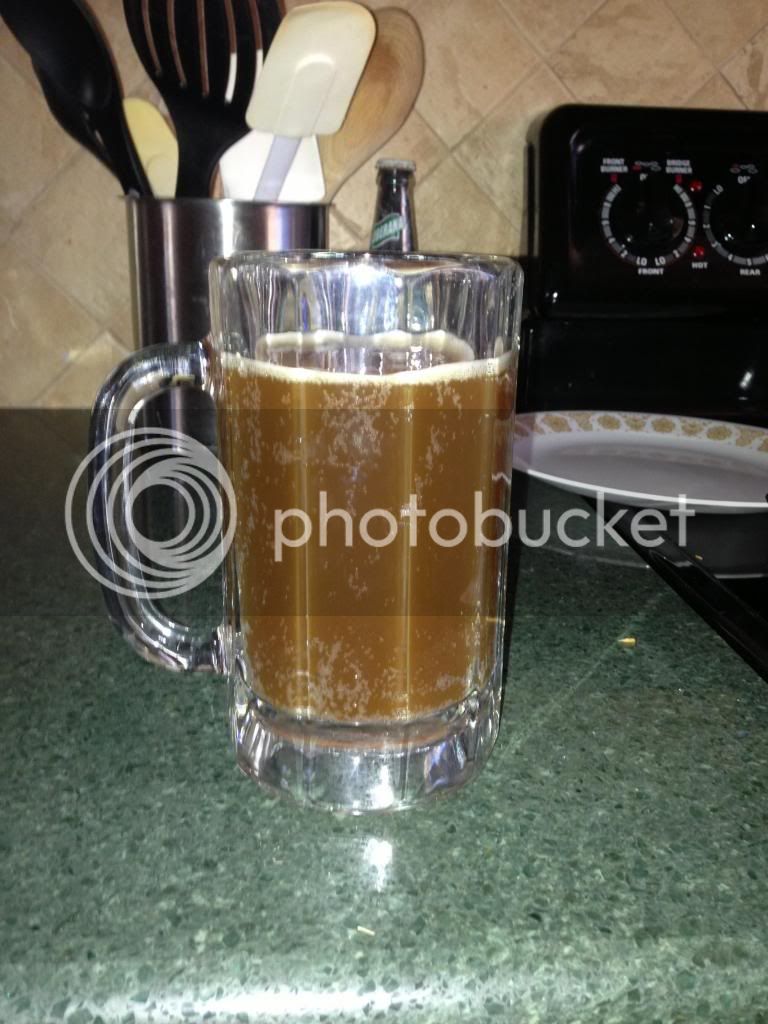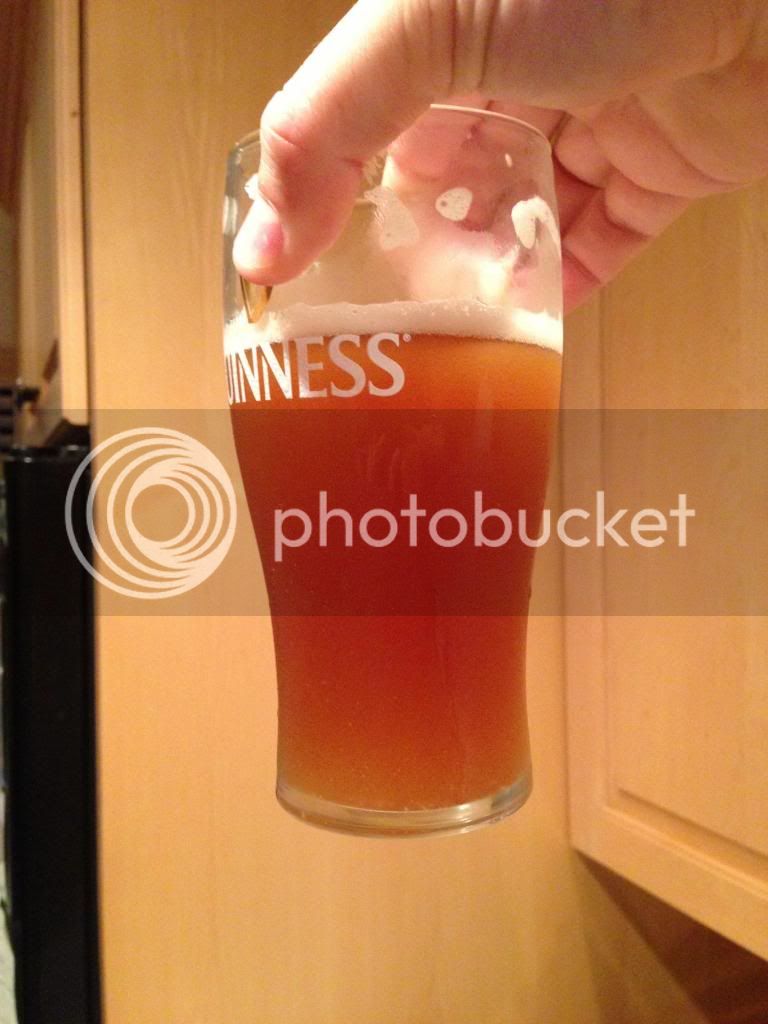Well sh!t!!! How do I get the red without the strong malt presence? I'm trying to make something similar to Tocobaga Red by Cigar City.
Can I up the CaraRed without bringing to much malt taste to the recipe? Maybe mash at a lower temp, 149ish?
Here is my final revised recipe for a Tocobaga clone. I tried it yesterday and it tastes awesome! Not only does it taste pretty close to Tocabaga, I would dare to say it is better than the real thing. Thanks for all of the tips. Enjoy!
Brewing Steps: Tony's Toke -A- Bong Ale
American IPA
Type: All Grain Date: 12/13/2012
Batch Size (fermenter): 10.00 gal Brewer: Tony
Boil Size: 12.05 gal Asst Brewer:
Boil Time: 60 min Equipment: Tony's Setup - Keggles and Cooler (10 Gal/37.8 L) - All Grain
Final Bottling Volume: 10.08 gal Brewhouse Efficiency: 70.00
Fermentation: Ale, Two Stage Taste Rating(out of 50): 30.0
Taste Notes:
Prepare for Brewing
Create a yeast starter with 3.15 l of wort
Clean and Prepare Brewing Equipment
Total Water Needed: 15.56 gal
Water Prep
Amt Name Type # %/IBU
2.00 tbsp PH 5.2 Stabilizer (Mash 60.0 mins) Water Agent 1 -
Mash or Steep Grains
Mash Ingredients
Amt Name Type # %/IBU
22 lbs Pale Malt (2 Row) US (2.0 SRM) Grain 2 75.2 %
3 lbs Caramel/Crystal Malt - 60L (60.0 SRM) Grain 3 10.3 %
2 lbs Munich Malt - 20L (20.0 SRM) Grain 4 6.8 %
2 lbs Vienna Malt (3.5 SRM) Grain 5 6.8 %
4.0 oz Chocolate Malt (350.0 SRM) Grain 6 0.9 %
Mash Steps
Name Description Step Temperature Step Time
Mash In Add 36.56 qt of water at 163.7 F 152.0 F 60 min
Batch sparge with 2 steps (0.39gal, 6.03gal) of 168.0 F water
Boil Wort
Add water to achieve boil volume of 12.05 gal
Estimated pre-boil gravity is 1.064 SG
Boil Ingredients
Amt Name Type # %/IBU
1.00 oz Centennial [10.40 %] - Boil 60.0 min Hop 7 16.5 IBUs
1.00 oz Citra [13.50 %] - Boil 60.0 min Hop 8 21.5 IBUs
2.00 Items Whirlfloc Tablet (Boil 15.0 mins) Fining 9 -
1.00 oz Cascade [6.20 %] - Boil 15.0 min Hop 10 4.9 IBUs
1.00 oz Vanguard [5.50 %] - Boil 15.0 min Hop 11 4.3 IBUs
1.00 oz Willamette [4.70 %] - Boil 15.0 min Hop 12 3.7 IBUs
1.00 oz Amarillo [9.20 %] - Boil 10.0 min Hop 13 5.3 IBUs
1.00 oz Citra [13.50 %] - Boil 10.0 min Hop 14 7.8 IBUs
1.00 oz Amarillo [9.20 %] - Boil 5.0 min Hop 15 2.9 IBUs
1.00 oz Pacifica [5.40 %] - Boil 5.0 min Hop 16 1.7 IBUs
Steeped Hops
Amt Name Type # %/IBU
1.00 oz Cascade [6.20 %] - Aroma Steep 20.0 min Hop 17 0.0 IBUs
1.00 oz Centennial [10.40 %] - Aroma Steep 20.0 min Hop 18 0.0 IBUs
1.00 oz Citra [13.50 %] - Aroma Steep 20.0 min Hop 19 0.0 IBUs
Estimated Post Boil Vol: 10.92 gal and Est Post Boil Gravity: 1.073 SG
Cool and Prepare Fermentation
Cool wort to fermentation temperature
Transfer wort to fermenter
Add water to achieve final volume of 10.00 gal
Fermentation Ingredients
Amt Name Type # %/IBU
1.0 pkg London ESB Ale (Wyeast Labs #1968) [124.21 ml] Yeast 20 -
Measure Actual Original Gravity _______ (Target: 1.073 SG)
Measure Actual Batch Volume _______ (Target: 10.00 gal)
Fermentation
12/13/2012 - Primary Fermentation (4.00 days at 67.0 F ending at 67.0 F)
12/17/2012 - Secondary Fermentation (10.00 days at 67.0 F ending at 67.0 F)
Dry Hop and Prepare for Bottling/Kegging
Dry Hop/Bottling Ingredients
Amt Name Type # %/IBU
4.00 oz Citra [12.00 %] - Dry Hop 7.0 Days Hop 21 0.0 IBUs
Measure Final Gravity: _________ (Estimate: 1.020 SG)
Date Bottled/Kegged: 12/27/2012 - Carbonation: Keg with 12.54 PSI
Age beer for 30.00 days at 65.0 F
1/26/2013 - Drink and enjoy!
Notes
Created with BeerSmith











![Craft A Brew - Safale BE-256 Yeast - Fermentis - Belgian Ale Dry Yeast - For Belgian & Strong Ales - Ingredients for Home Brewing - Beer Making Supplies - [3 Pack]](https://m.media-amazon.com/images/I/51bcKEwQmWL._SL500_.jpg)

















































